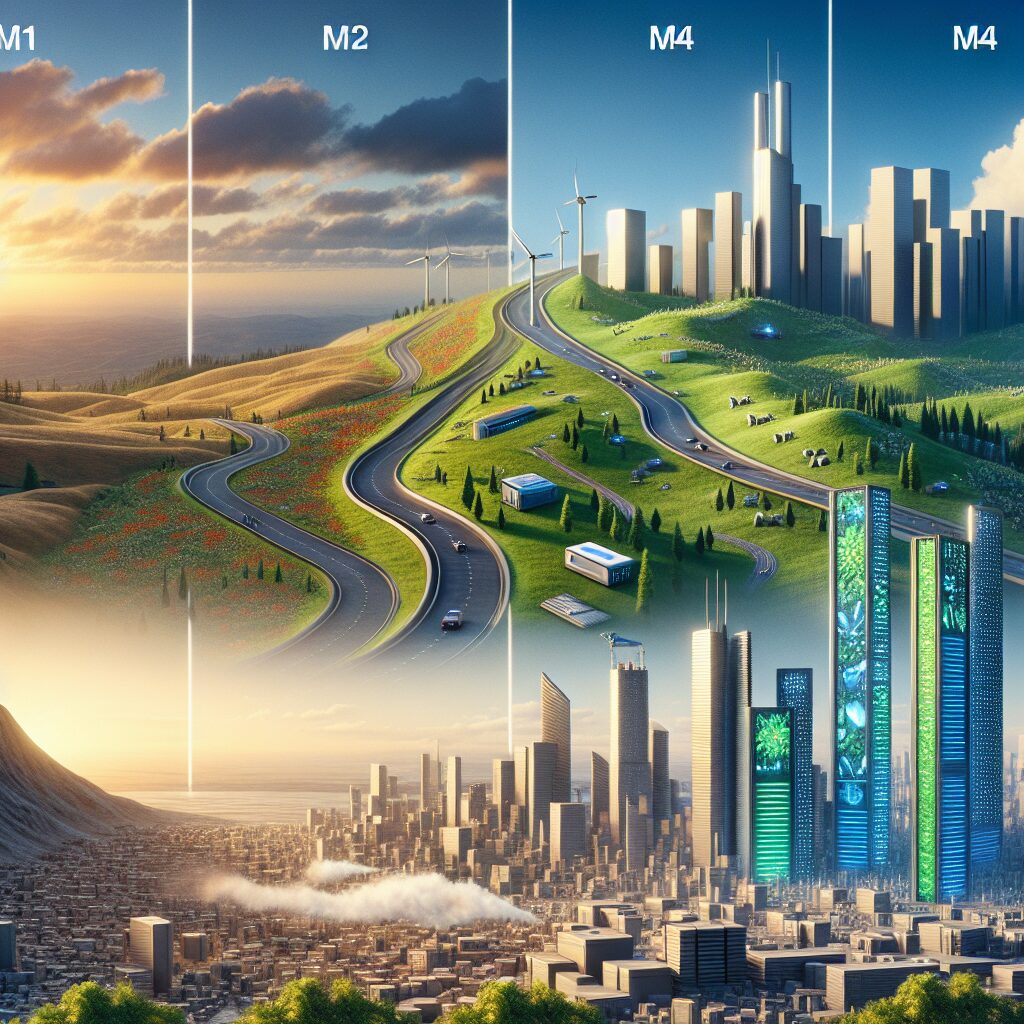The high-end Apple Silicon family has been a remarkable testament to the evolution of computing technology. From the M1 Max to the M2 and M4 Max, this triad of powerhouses has proven that Apple’s commitment to innovation is ceaseless. Let’s embark on a journey through this dynamic tech trilogy, examining how each chip has raised the bar in performance and energy efficiency.
The M1 Max, Apple’s first in-house silicon, was a bold proclamation of self-reliance. With an 8-core CPU, 8-core GPU, 16-core Neural Engine, and unified memory architecture, the M1 Max revolutionized the capabilities of MacBooks, delivering unparalleled performance per watt. It shattered previous benchmarks, becoming a paragon of processing power and efficiency. Yet, this was only the beginning.
The M2 Max emerged as the next stepping stone in the silicon saga. Apple ramped up the CPU and GPU cores, boosting performance while maintaining energy efficiency. The result was a chip that surpassed its predecessor in raw power, without sacrificing the operational efficiency that made the M1 Max so revolutionary. The M2 Max stood as a testament to Apple’s ability to push boundaries without compromising on its commitment to green computing.
Just when it seemed like Apple had reached the pinnacle of its silicon evolution, along came the M4 Max. Rumored to be a behemoth, this chip is expected to eclipse both its predecessors in power and efficiency. With the potential for more cores and an enhanced neural engine, the M4 Max promises to deliver unprecedented performance, making high-end computing tasks smoother than ever before.
Yet, it’s not just about power. With each successive chip, Apple has improved on power management, ensuring that MacBooks remain cool and quiet even under heavy workloads. The M1 Max set a new standard for quiet computing, the M2 Max pushed it further, and the M4 Max is expected to continue the trend, making Apple’s MacBooks the go-to choice for professionals and creatives alike.
What makes this silicon evolution truly fascinating is the balance that Apple has managed to strike between power and efficiency. Each new chip has built on the strengths of the previous one, delivering more performance while optimizing energy usage. This commitment to balancing power and efficiency has allowed Apple to deliver breakthroughs in performance without compromising on battery life.
The journey from the M1 Max to the M4 Max is a testament to Apple’s relentless drive for innovation. It’s a story of how a tech giant refused to rest on its laurels and continuously pushed the boundaries of what’s possible. It’s a reminder that in the world of technology, the only constant is change – and Apple is leading the charge.
So, as we stand on the precipice of the M4 Max’s arrival, we can look back at the M1 and M2 Max with admiration, recognizing their role in this ongoing saga of innovation. And as we look forward, we can only imagine what new heights the next chapter in Apple’s silicon evolution will reach. After all, if there’s one thing Apple has taught us, it’s to expect the unexpected.
